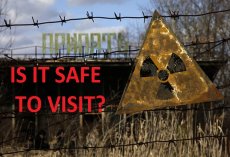News
§
Atom
Speck of matter, which impossible to break by chemical agents. Atoms have nucleus
consisting of positively charged protons and uncharged neutrons of same mass.
Alpha particle
Positively charged particle evolving from atomic nucleus during radioactive decay.
Alpha particles are helium nuclei and contain 2 protons and 2 neutrons.
§
Beta particle
Particle evolving from atom during radioactive decay. Beta particles could be both
electrons (negatively charged) and positrons.
§
Gamma-radiation
High energy electromagnetic emission from atomic nucleus, practically identical to x-
rays.
§
Dose
Energy absorbed by tissue from ionizing radiation. One Gray equals to one Joule per
kg, but dose varies depending on impact of different kinds of radiation.
§
Depleted uranium
Uranium containing less than 0.7% of natural Uranium-235. As by-product of
enrichment in fuel cycle, it usually contains 0.25-0.30% of Uranium-235, the rest is
Uranium-238.
§
Neutron
Uncharged atomic particle being in nucleus of each atom, except for hydrogen. Single
fluent neutrons moving at different speeds are generated due to fission reactions.
Slow (thermal) neutrons could in their turn become easily a reason of nuclei fission
of “fissile” isotopes, e.g. U-235, Pu-239, U-233; and fast neutrons could cause nuclei
fission of “fertile” isotope, e.g. U-238.








